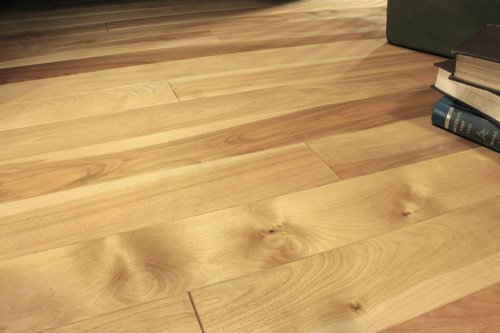When it comes to choosing hardwood flooring, the decision can feel overwhelming. With so many types of wood available, it’s important to select the material that best fits your style, budget, and home environment. Two of the most popular choices in the hardwood flooring market are birch and oak. Each has its own unique characteristics, benefits, and drawbacks, which makes understanding the differences between them essential for any homeowner looking to invest in long-lasting, beautiful floors.
In this comprehensive guide, we’ll explore the pros and cons of birch and oak wood floors, comparing them in terms of appearance, durability, cost, and maintenance. By the end of this article, you’ll have all the information you need to make an informed decision for your home. Plus, if you’re looking for expert installation or flooring advice, don’t hesitate to reach out to the professionals at Mr. Felix Floor, Inc.
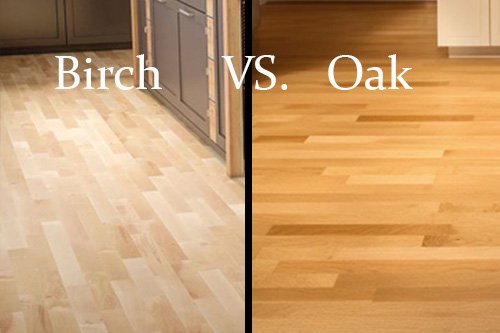
1. Appearance and Aesthetic Appeal
Birch Wood Floors
Birch wood floors are known for their striking grain patterns and warm tones. Depending on the species (yellow birch or sweet birch), birch floors can range from pale yellow to reddish-brown, with a smooth, even texture. One of the main reasons people choose birch wood flooring is for its natural beauty and unique color variation. The grain patterns are often less pronounced compared to oak, giving birch floors a sleek and modern appearance.
- Color Variations: Light to medium tones, with some darker streaks.
- Grain Patterns: Subtle and smooth, with minimal knots.
- Best Suited For: Modern, contemporary, or Scandinavian-style homes where a clean, minimalist look is desired.
Oak Wood Floors
Oak, specifically red and white oak, is the most widely used wood for flooring in the United States. Oak floors are celebrated for their bold grain patterns, offering a more rustic or traditional look. Red oak tends to have a warm reddish hue, while white oak offers a cooler, more neutral palette with gray and brown undertones. Oak’s distinct texture and grain provide a classic, timeless appeal that suits many interior design styles.
- Color Variations: Wide range of tones, from light beige to rich brown, depending on the species.
- Grain Patterns: Bold, prominent grains with more knots and character.
- Best Suited For: Traditional, rustic, or farmhouse-style homes where texture and character are important.
Which Wins on Aesthetic? It depends on your personal taste. Birch is often chosen for its sleek, modern appearance, while oak’s prominent grains and versatility make it a go-to choice for more traditional or rustic designs. If you’re looking for something classic and durable with a timeless appeal, oak might be the better choice. However, for a lighter, more contemporary look, birch could be the winner.

2. Durability and Hardness
When investing in wood flooring, durability is a critical consideration. Both birch and oak are considered hardwoods, but they differ in hardness and overall wear resistance.
Birch Wood Durability
Birch is a moderately hard wood, ranking between 1260 and 1470 on the Janka Hardness Scale, depending on the species. While it can withstand normal foot traffic in most households, it may not be the best choice for high-traffic areas or homes with pets and children. Birch wood tends to be more prone to dents and scratches compared to oak, especially in homes with heavy furniture.
- Janka Rating: Yellow birch is rated at 1260, while sweet birch is rated at 1470.
- Scratch Resistance: Moderate, may show wear in high-traffic areas.
- Best Suited For: Low to moderate traffic areas, bedrooms, and living rooms.
Oak Wood Durability
Oak, particularly white oak, is one of the most durable hardwoods available, with a Janka rating of around 1360 for red oak and 1360 to 1450 for white oak. Oak floors are renowned for their ability to withstand heavy foot traffic, making them ideal for high-traffic areas like hallways, kitchens, and living rooms. Oak’s durability, combined with its ability to hide scratches due to its pronounced grain, makes it a top choice for families with pets and children.
- Janka Rating: Red oak is rated at 1290, while white oak is rated at 1360.
- Scratch Resistance: High, durable enough for busy households.
- Best Suited For: High-traffic areas, families with pets, kitchens, and hallways.
Which Wins on Durability? Oak is the clear winner here, especially for homes that experience heavy use or have children and pets. If longevity and durability are your top priorities, oak offers superior performance.
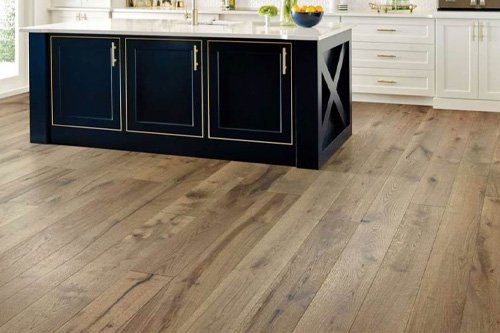
3. Cost Comparison
Price is always a factor when choosing flooring, and both birch and oak come with different price points based on availability, installation costs, and other variables.
Birch Wood Flooring Costs
Birch tends to be a bit more affordable than oak, especially when choosing yellow birch. The cost of birch wood floors can range from $5 to $8 per square foot, with higher-end options and installations pushing that cost slightly higher. It’s considered a budget-friendly option for homeowners looking for beautiful hardwood flooring at a lower price point.
- Average Cost: $5 to $8 per square foot (materials only).
- Installation Costs: Typically around $3 to $5 per square foot, depending on the complexity.
Oak Wood Flooring Costs
Oak, being more widely available and durable, is generally more expensive. The cost of oak flooring can range from $8 to $12 per square foot, depending on the grade and finish. White oak tends to be slightly more expensive than red oak due to its higher demand in certain styles, such as contemporary or farmhouse designs.
- Average Cost: $8 to $12 per square foot (materials only).
- Installation Costs: Typically around $4 to $6 per square foot, depending on labor and room layout.
Which Wins on Cost? If you’re looking for a more budget-friendly option, birch is likely the better choice. However, the higher upfront cost of oak may be justified by its superior durability and longevity.
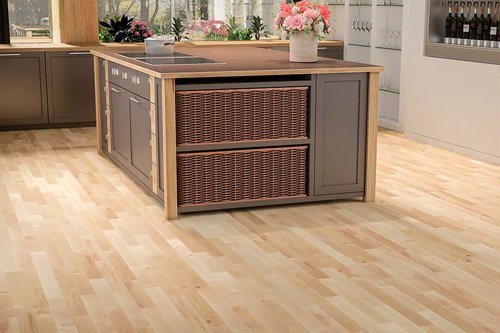
4. Maintenance and Care
Both birch and oak require regular care to maintain their beauty and durability. However, there are some differences in how each wood responds to wear and tear over time.
Caring for Birch Floors
Birch, being a bit softer than oak, is more prone to showing dents and scratches. It’s important to regularly sweep and clean birch floors to prevent dirt and debris from causing damage. You’ll also want to use furniture pads to prevent heavy items from leaving marks. Refinishing birch floors may be needed more often, especially in high-traffic areas.
- Care Tips: Regular sweeping, avoid dragging furniture, use rugs in high-traffic areas.
- Refinishing: May need refinishing every 5–7 years depending on usage.
Caring for Oak Floors
Oak floors, with their higher scratch resistance and durability, tend to require less maintenance. Their prominent grain pattern can also help mask minor scratches and dents. Like birch, oak floors benefit from regular cleaning and care, but they are generally more forgiving in terms of wear and tear. Refinishing is needed less frequently due to the wood’s strength.
- Care Tips: Regular sweeping and mopping, protective furniture pads, rugs in high-traffic areas.
- Refinishing: Every 7–10 years, depending on traffic and usage.
Which Wins on Maintenance? In terms of overall ease of maintenance, oak is the better option. It’s more resistant to scratches and wear, requiring less frequent refinishing compared to birch.
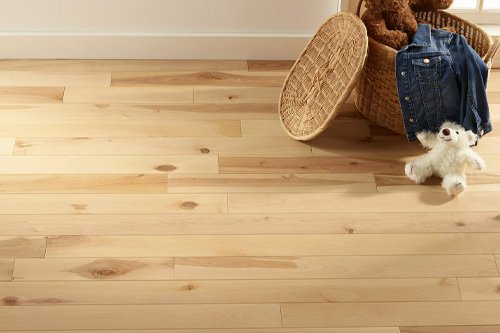
5. Environmental Impact
Sustainability and environmental impact are growing concerns for homeowners. Both birch and oak are sourced from hardwood trees, but the availability and growth rates of these trees differ, impacting their eco-friendliness.
Birch Wood Sustainability
Birch trees grow relatively quickly, making them a more sustainable option compared to slower-growing hardwoods. Many birch products come from responsibly managed forests, and birch is often considered a greener option due to its availability and renewability.
- Growth Rate: Fast, making it a more renewable option.
- Sustainability: Often sourced from managed forests, making it a good eco-friendly choice.
Oak Wood Sustainability
Oak trees, especially white oak, grow slower than birch, which can make them a less renewable resource. However, many manufacturers are committed to sourcing oak from sustainably managed forests. Additionally, oak’s durability and long lifespan mean that oak floors often need to be replaced less frequently, reducing the overall environmental impact.
- Growth Rate: Slow, but long-lasting.
- Sustainability: Sourced from sustainable forests, but slower to renew.
Which Wins on Environmental Impact? Birch is often seen as the more sustainable option due to its faster growth rate. However, oak’s durability may offset its slower renewability by reducing the need for replacements over time.
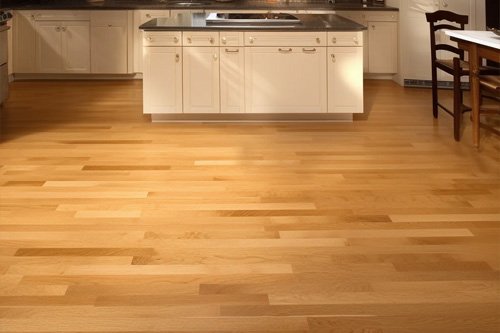
Conclusion: Birch or Oak – Which is the Better Choice?
Choosing between birch and oak wood floors comes down to your personal preferences and specific needs. If you’re looking for a sleek, modern appearance at a lower cost, birch may be the perfect fit for your home. However, if you need something more durable and timeless, with the ability to withstand high traffic and resist wear, oak is likely the better choice.
No matter which option you choose, installing quality hardwood floors is a long-term investment in your home’s beauty and value. To ensure you get the best results, it’s crucial to work with a trusted professional.
Why Choose Mr. Felix Floor, Inc.?
At Mr. Felix Floor, Inc., we specialize in the installation of premium birch and oak wood floors. With years of experience and a reputation for excellence, we guarantee high-quality craftsmanship and personalized service to help you achieve the perfect look for your home. Whether you prefer the modern elegance of birch or the timeless charm of oak, our expert team will guide you through every step of the process.
Contact Mr. Felix Floor, Inc. today to get a quote, schedule a consultation, or learn more about our flooring services!

